How the Rainbow Fiber Co-Op is protecting the culture surrounding the Navajo-Churro sheep — and the Nation with whom their past and future are so deeply intertwined.
To understand the Navajo’s deep interconnection with, and reverence for, the Navajo-Churro sheep one must go way, way back. To the very beginning of time.
In the traditional Navajo story of creation, it is told that the deities came together to create every living being on earth—including sheep.
The Holy People scooped handfuls of different colored clouds to form the sheeps’ bodies. White day clouds were gathered into white sheep. Black, nighttime clouds were molded into black sheep. Storm clouds were used to create gray or “blue” sheep. Tan-colored sheep were made from the yellow clouds of twilight. The Rainbow People gathered dusk’s orange and red clouds to form the first brown sheep, the most beautiful and sought after of all. The Rainbow beings gave a part of their beauty to create this sheep and they told the other deities that the brown sheep will be a rare “blessing” to a herd, to test the humility of humankind.
The first sheep were then assembled with wild tobacco for their ears, precious stones as their eyes, a willow branch broken into four sticks became their legs. The deities recited sacred prayers and songs as the Wind beings swept through and blew first breath into them. The deities, satisfied with their creation, sent them to earth upon a rainbow trail and we Navajo have been shepherds of our sacred sheep ever since.
Dibé béí iiná – Sheep Is life.
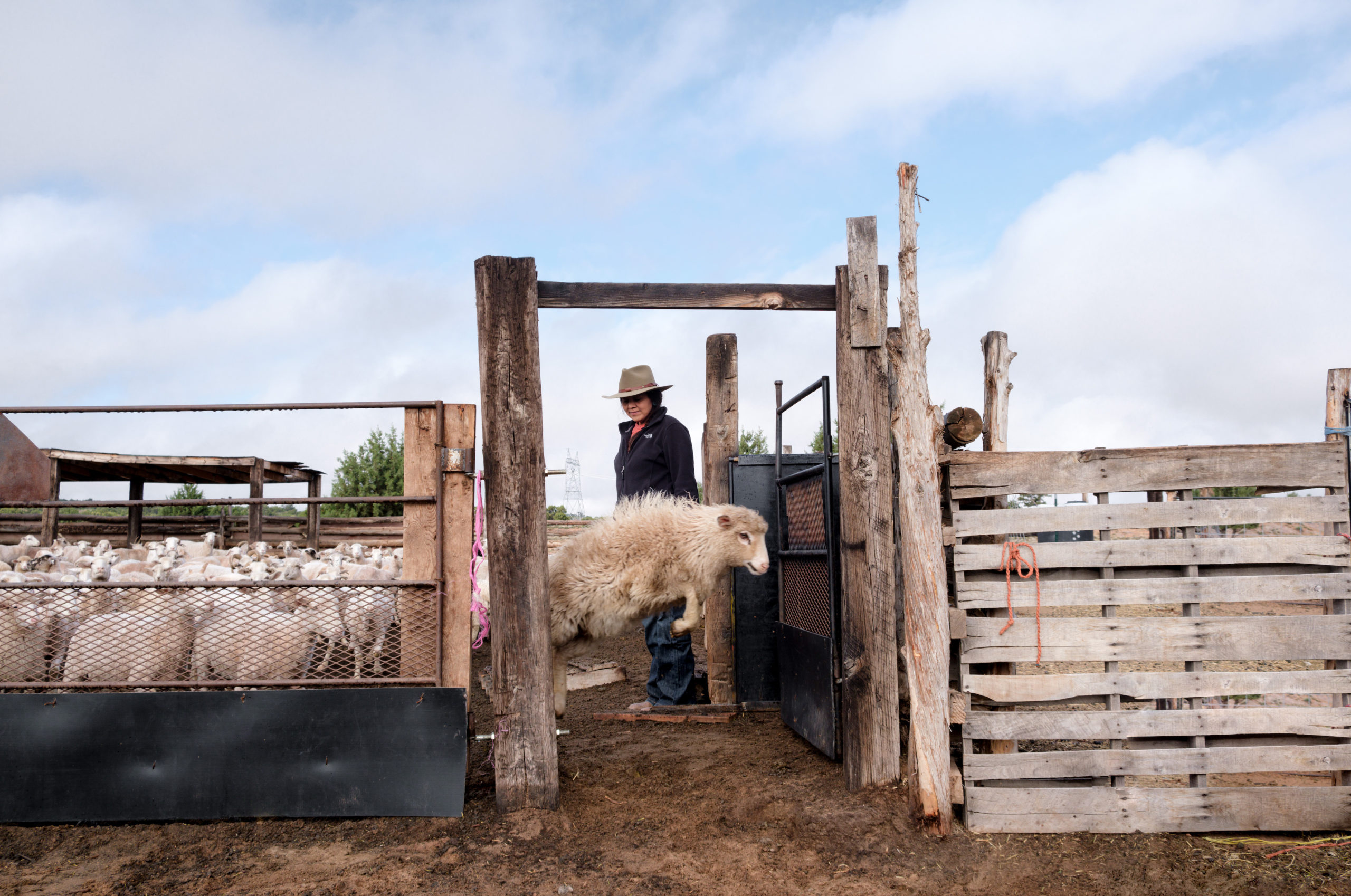
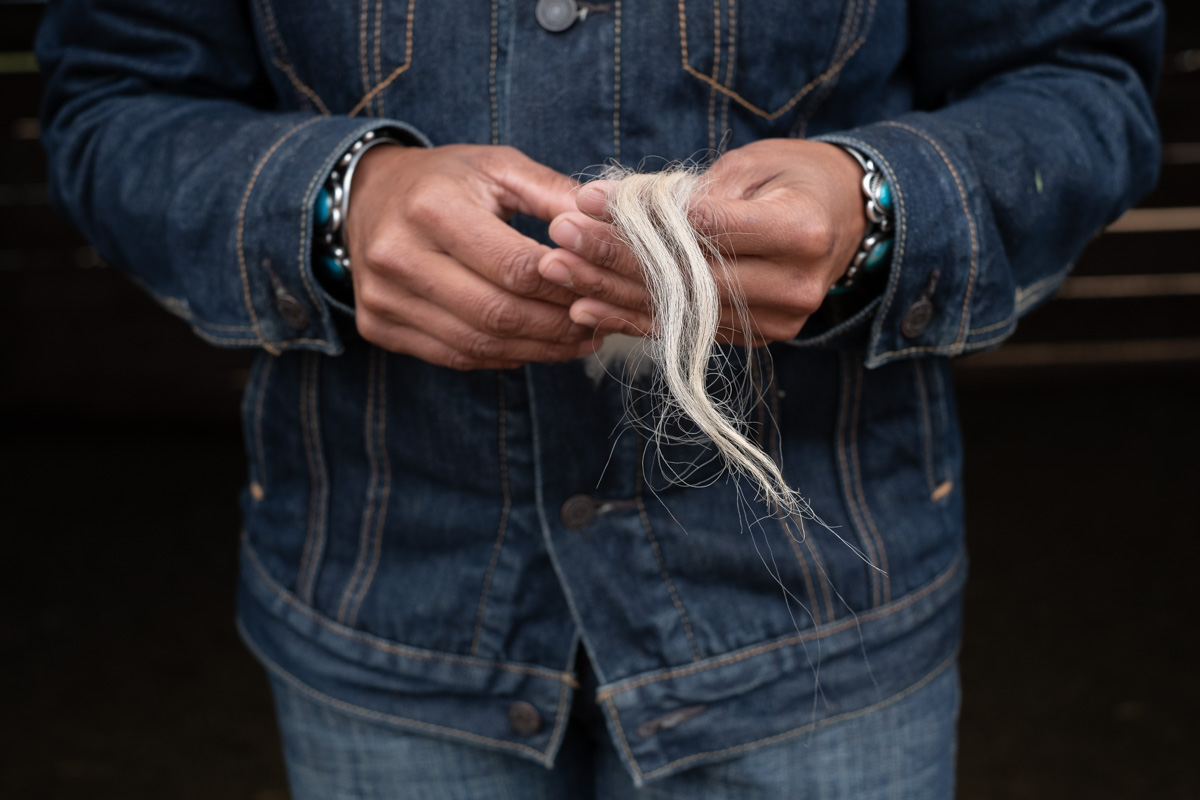
Growing up on the Navajo Nation in Sunrise Springs, near Ganado, Arizona, Nikyle Begay‘s maternal grandfather would tell this story, the story of T’áá Dibé, the First Sheep. Perhaps this story is also what instilled a special fondness in Nikyle’s heart for the brown and black lambs. Many of Nikyle’s early memories of sheep are linked to their paternal grandmother and great-grandmother, who used to say that they were destined to become a weaver if it was only the colored lambs they wanted. Today, at 32 years old, Nikyle has been raising sheep for 19 years. “19 seasons of colored lambs.” So it seems especially fitting that the very first lamb born in 2022 was a Dibé yazhí łizhiní, a little black lamb.
Many, many generations later, the Navajo creation story is as alive and real as the sheep themselves. Its energy still fuels the vibrant young Navajo who continue to carry this story, and these pastoral lifeways forward.
A New Creation Story: Rainbow Fiber Co-Op
In 2020, as the pandemic disproportionately devastated the Navajo Nation, Nikyle Begey watched as many Diné people got sick and passed away. Flocks of sheep lost their shepherds. Most of the major wool buys were canceled, wool prices across the world tanked, and Navajo-Churro shepherds were told that their wool was worth pennies. Many Diné weavers who depended on income from farm visits, classes, art shows, and fiber events were on the brink of economic collapse.
As the challenges continued into 2021, Nikyle began to take the teachings of The First Sheep to heart in a new way; “I felt moved to do something, not just to support my own flock, but to do something on behalf of my fellow Diné shepherds.” Nikyle joined forces with a friend and Navajo-Churro shepherd, Kelli Dunaj who runs a successful direct-to-customer lamb business and markets sheepskins, weaving yarns, and roving through Spring Coyote Ranch in California. “We feel a kinship in our reverence for the pastoral lifeway and are both enthralled by the enduring significance of Diné sheep culture over nearly five centuries.” From this shared passion, the Rainbow Fiber Co-Op was formed.
Rainbow Fiber Co-Op is a Diné-led agricultural co-operative working to preserve the present and future lifeways of Native pastoralists. The Co-Op pays Diné shepherds a fair price for their wool and helps them sustain their flocks of Navajo-Churro sheep. The organization has developed an e-commerce platform to sell Diné-grown Navajo-Churro weaving yarns direct to customers.
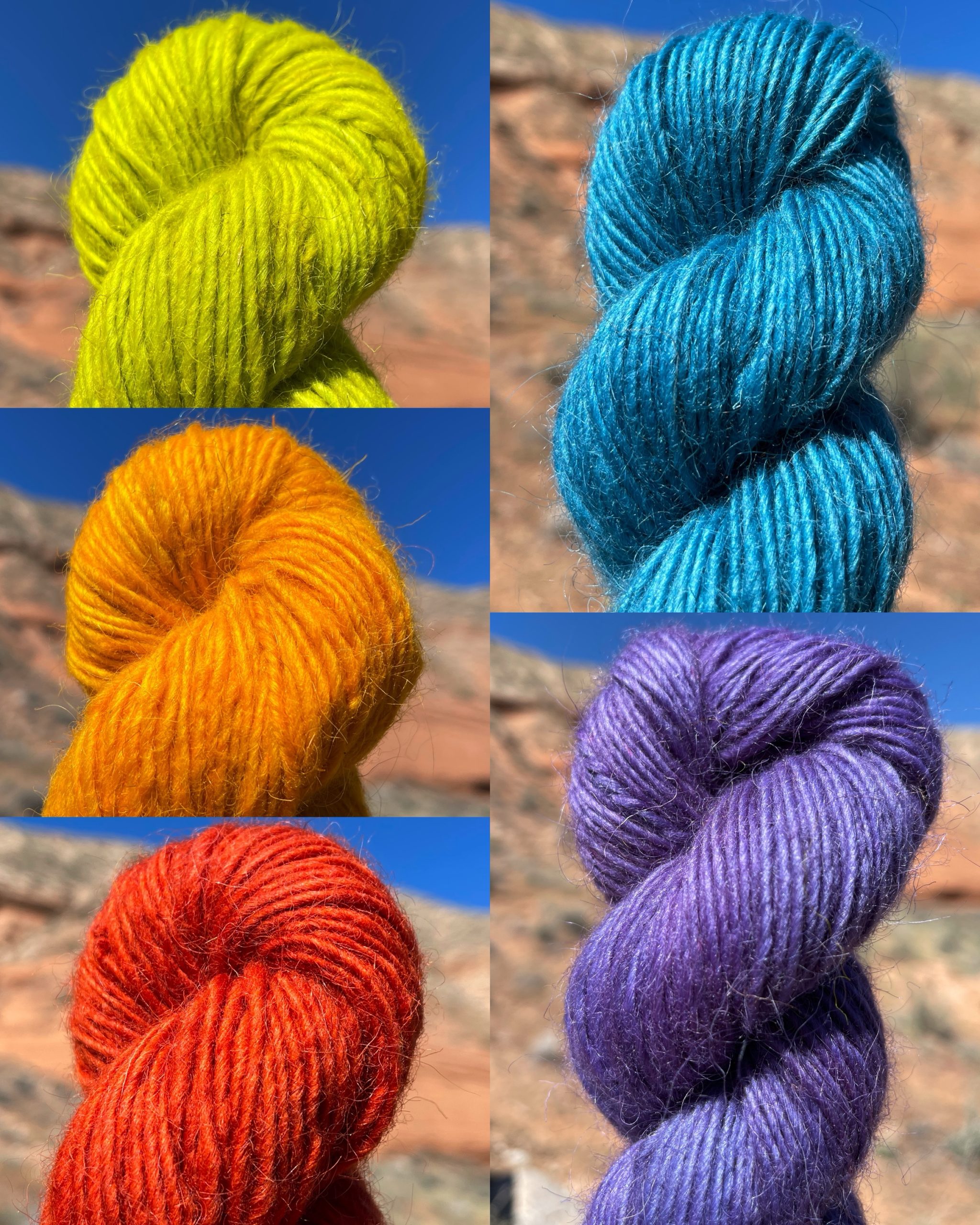
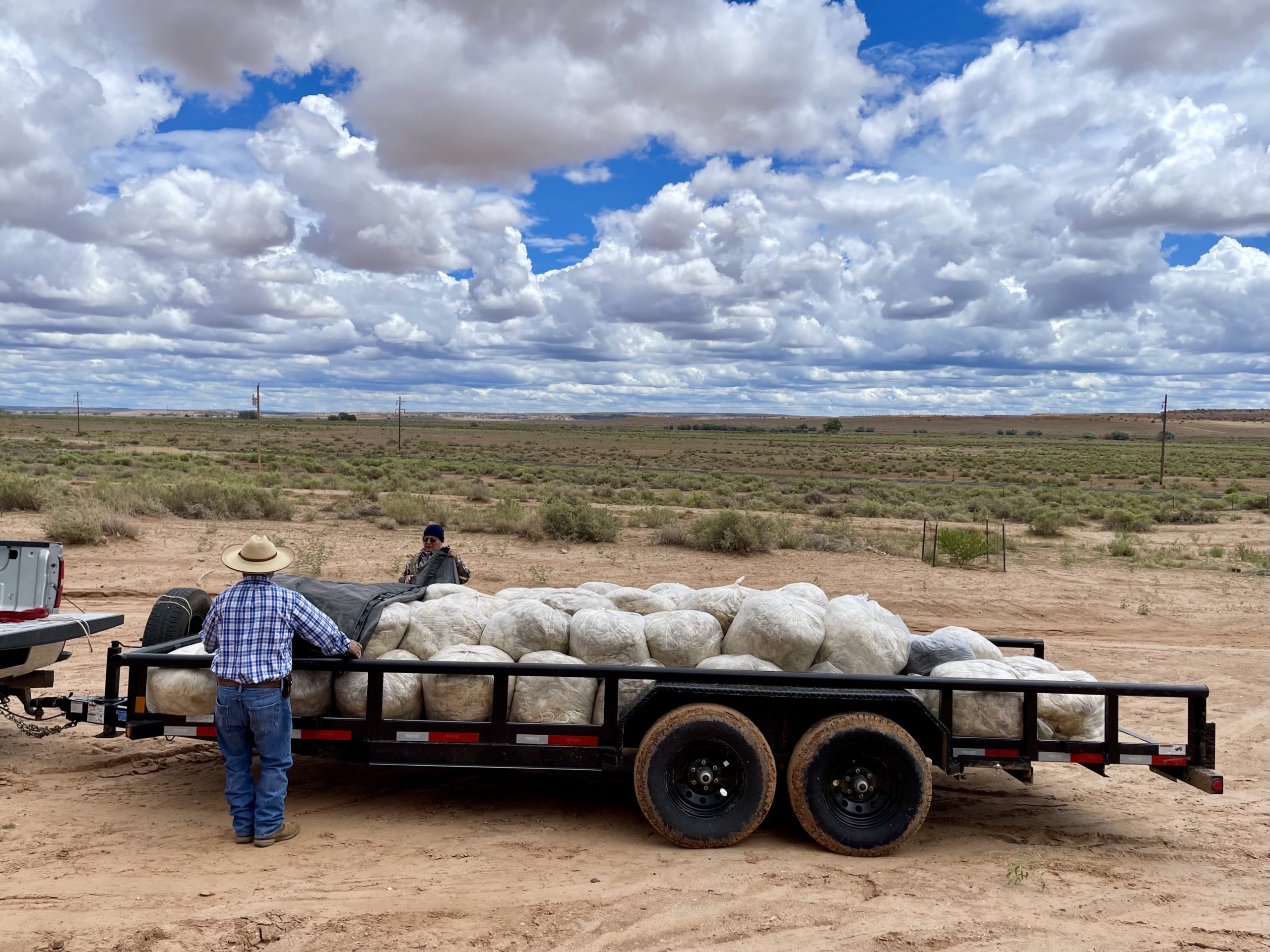
In Diné culture, a rainbow signifies protection and brings blessings to the land. It is the connection, the bridge, between the earth and sky. Nikyle says, “Calling ourselves Rainbow Fiber, we are paying homage to our traditional story of the creation of sheep and call upon the rainbow spirits for guidance, protection, and continued blessings for Diné shepherds, their sheep, and their wool.”
So far, the co-op has raised enough money through grants and private donations to pay a stipend to their shepherds for their shearing, and in July 2021, they made their first purchase of 3,200 pounds of raw Navajo-Churro wool. Rainbow Fiber has also partnered with Fibershed, a nonprofit organization that develops regional, land-regenerating natural fiber and dye systems, and received support from the First Nation Development Institute. The goal of the project is to make enough money from the sale of Navajo-Churro yarns to fund the wool buy and yarn production again in 2022 and 2023.
Treat them well; the tradition, art, and science of raising Navajo-Churro sheep
The Navajo tribe is the second largest tribe of Native American Indians in the U.S. The name “Navajo” comes from the Spanish who called them the Apaches of Navajo. They called themselves “Diné” or “the People.” The Navajo Nation territory is the largest in the United States, covering about 17,544,500 acres of parched desert plains and highland mountains in northeastern Arizona, northwestern New Mexico, and a small portion of southeastern Utah.
Nearly every family on the Navajo Nation has a direct connection to sheep. Used for ceremony, wool, and as a source of lean, healthy meat, the Dibé dits’ozí, Navajo-Churro sheep have sustained the Navajo for nearly 400 years. The hardy Churro breed, introduced to the American Southwest by Spanish conquistadors around the turn of the 17th century, is a desert range animal that is more drought-tolerant than most domestic sheep breeds. The ewes are known to be highly self-sufficient with strong maternal instincts and a higher lambing rate. On the verge of extinction a generation ago, the Navajo-Churro has made a comeback, thanks to the love and dedication of the Diné people.
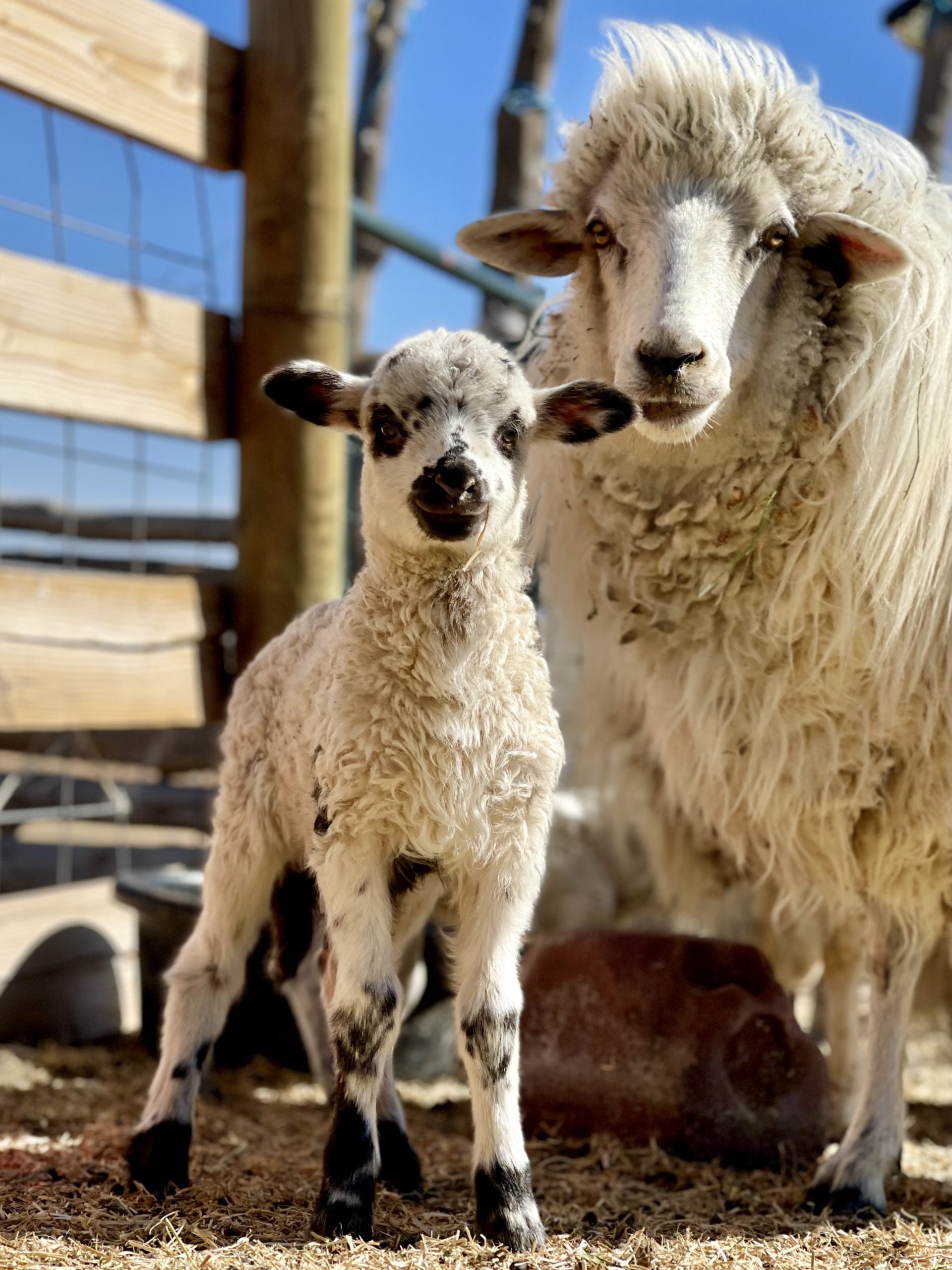
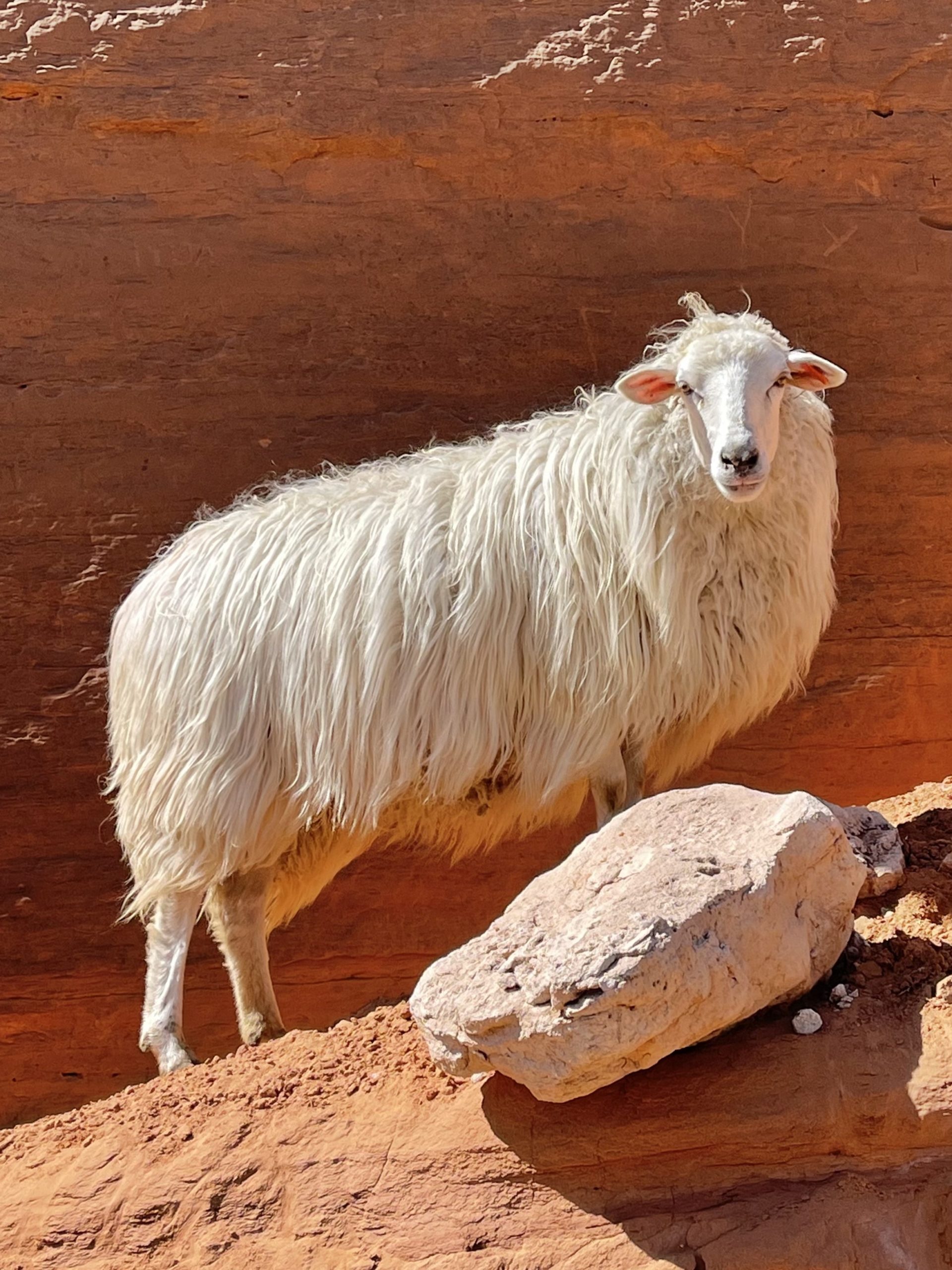
Ephraim (Zefren) Anderson is a multi-disciplined Navajo fiber artist, jewelry maker, and active board member for the Rainbow Fiber Co-Op. Zefren applies his deep knowledge of the Navajo-Churro breed, Navajo oral history, philosophy, archeology, and traditional weaving techniques to create art that “pushes the Navajo narrative into the future.”

“Churro sheep have this innate ability to adapt their fiber to diet, land, and climate. So every sheep is technically a unique product to one region and family. The product changes with time as the family works in relationship to local weavers. The cycle begins with dirt, forage, rain, and sunshine and the family’s ability to nurture natural processes.”
Zefren explains how the Navajo families manage the land by responsibly grazing their sheep to control erosion and keep the grass cycle going. As much as the environment influences the sheep’s fiber, the shepherd is equally important. “My grandmother would always say of the sheep, “Treat them well and they will treat you well too.” Diné shepherds sing to their flocks, and are careful to protect them from predators. Each shepherd produces a “unique product in the wool that weavers key into and use in specific ways. There are just so many things that are unique to this breed, that’s why our Navajo ancestors loved this animal and its special relationship to the land.”
Preserving Lifeways & Fair Trade Economies
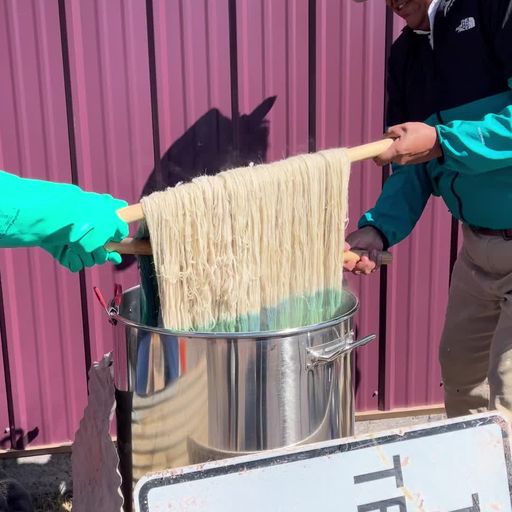
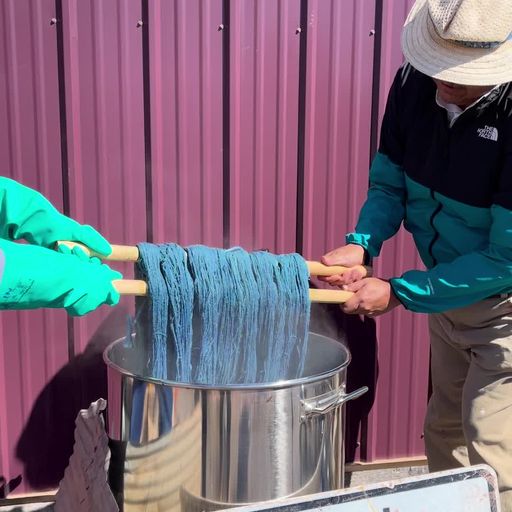
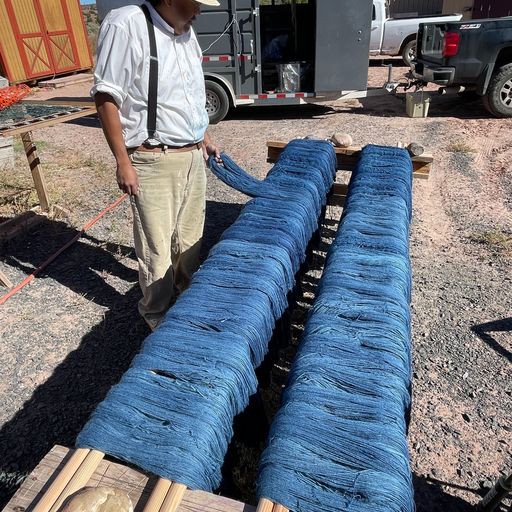
In a global economy, Diné shepherds and weavers face a myriad of challenges; Navajo patterns have been appropriated for centuries; counterfeit Navajo products litter the internet; Diné shepherds worry because they serve a niche market specific to handweaving and most of the Navajo-Churro wool products currently for sale online are from non-Diné shepherds. Despite these challenges, many shepherds create a market for themselves through hand spinning, weaving, and teaching weaving classes. But this is difficult to do at scale and an unreliable source of income.
In addition to supporting their producer flocks, Rainbow Fiber is passionate about supporting the wool supply chain of the Southwest. The Co-op has partnered with Mora Valley Spinning Mill in Mora, New Mexico to process all of the raw wool purchased from Diné shepherds. Mora Valley is the only mill in the U.S. that specializes in processing Navajo-Churro wool because their machinery is uniquely suited to spinning long-staple, dual-coated wool and producing the optimal “twist” for weaving.
Navajo-Churro sheep are a dual-coated breed with a coarser outer coat and a softer inner coat. When both coats are spun together it creates a strong and lustrous yarn ideally suited to weaving blankets and rugs. It is also fabulous for knitting outerwear, similar to Lopi-style yarn.
The Bridge From Past to Future
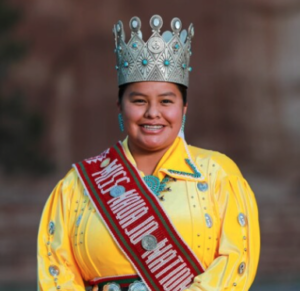
Niagara Rockbridge, Miss Navajo Nation, 2021
Many young Navajo are continuing the traditions of shepherding, shearing, hand spinning, and weaving that were passed down to them from great-grandparents. On a recent visit to a Native Royalty Pageant at a Window Rock, AZ elementary school Niagara Rockbridge (Miss Navajo Nation 2021-2022) met a group of young weavers, six to eight years old, “They were up there with their little homemade looms, and they were talking about the significance of every part of it and what it means to them and dyeing the wool and going to collect the plants to find the different colors. That really instilled hope within me.”
“So that’s why I say, there’s hope here, that our youth are still going to carry this forward.”
Niagara feels that perhaps now more than ever, the youth are searching for ways to learn about and connect with where they come from; “That ties directly back into our cultural aspects of weaving; the stories that go with weaving, the songs, the prayers. As Native people, everything that we do is so connected…I think the youth are gladly taking part and learning and are hopeful that they can one day, you know, revive [shepherding and weaving] to the point where our great grandparents were able to use it to support their families.”
Niagara was proud to learn about the Rainbow Fiber Co-op because it creates a new opportunity for Native businesses and entrepreneurs to sell their goods not only within the Navajo Nation but to the world, thus creating a conversation about where these goods have come from. And conversation is the first step towards change; creating a dialogue facilitates connections and builds community. It acknowledges the lessons that these First People bring us; it reminds the world that the original keepers of the earth are still here. They are present, with one foot in the past and a hopeful eye to the future.
Little Black Sheep
Like their grandfather, Nikyle Begay is also a storyteller. And all storytellers are keepers and protectors of culture. The story itself weaves meaning from the past into the present in order to shape the future.
“As a child,” Nikyle writes, “I was taught by many elders that we weave for moisture, we raise sheep for moisture. These sacred animals have a connection to the Universe. Their hooves awaken Mother Earth’s energy. Their calls awaken Father Sky. We must recite our prayers. Sing to and for your sheep, sing as you weave, sing to bring harmony. Do this proudly, so you’re heard by the Diyiin Dine’e – The Deities. Collect the sacred plants as you’re out with the sheep, use those plants with your prayers. And smoke their tobacco, let the smoke carry your prayers into the beyond. Show the Universe that as a five-fingered being, you appreciate the moisture, that you appreciate the sheep.”
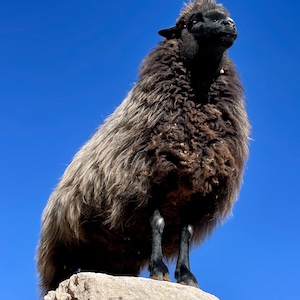
“Dibé łizhiní is what [my great grandmother] would sometimes call me, it means black sheep.”
And like the original brown sheep, created from the red and orange clouds at dusk, the Rainbow Fiber Co-op is a rare blessing to the herd, bestowed upon us to test the humility of humankind.
It is all connected. Dibé béí iiná – Sheep Is life.
